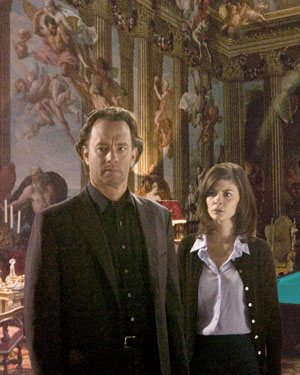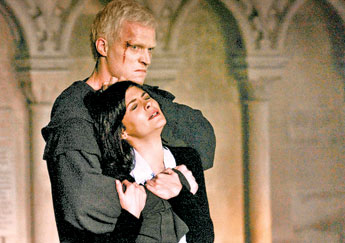DIREK CONVERSATIONS WITH JEFFREY JETURIAN
 By Ed Saludes
By Ed Saludes Two years ago, Cinemanila convened a group of commercial and independent film makers at the Coffee Bean and Tea Leaf in Greenbelt 3. Director 1 won a Palme d'Or few years back. Director 2 attended Cannes' film school, Cinefondation. Director 3 made three of the longest Pinoy films in history. Director 4 is a part-time model and a part-time professor in La Salle. Director 5 is a big Susan Roces fan. Director 6 has Igorot ancestors. Director 7 is represented by his live-in partner. Director 8 is the heir to the beauty business empire of his mother. Director 9 loves the name Maximo. Director 10 is known for submitting half of the 400 entries in Cinemalaya.
As the coordinator of the festival, I was tasked by the festival director Tikoy Aguiluz to document that very rare gathering. After the three-hour meeting, I was grinning like Joker between my ears. I have just realized that in a room filled with Filipino film makers, it is easy to determine who are talented or not. It doesn't even require watching their films. You just need to observe how they behave in a group conversation. Those who dominated the discussion and whose voices reverberated on the four corners of the coffee shop are the 'not-so-talented ones'. The 'talented ones' did most of the listening.
One of the talented ones present in that occasion was Jeffrey Jeturian. Direk Jeff to many, he has already done seven films since his critically-acclaimed debut, Sana Pag-ibig Na (Enter Love) which gave the late Nida Blanca Best Actress grand slam honors from major award-giving bodies. For the past seven years, he had gained local and international recognitions for his films such as Tuhog (Larger Than Life) which competed in Venice Film Festival in 2001 and last year's Kubrador (The Bet Collector), the most-awarded Filipino film of 2006.
In spite of his busy sschedule, Direk Jeff granted an interview with the Writers Guild’s Project Backspace at the Bang Café in Tomas Morato ten hours before he left for the 2007 Singapore International Film Festival.
This time, the talented one did most of the talking.
How is life after 'Kubrador'?
Last year was a particularly busy year for me in terms of travel. Because of "Kubrador" (the film has so far been invited to close to 50 international film festivals since it premiered at the 28th Moscow International Film Festival last April 2006), I've been kept busy traveling from one film festival to another where the film has been invited to compete or be exhibited. I was in Moscow, New Delhi, Toronto, Pusan (Korea), Mumbai and for the fourth quarter of last year, was hopping all over Europe (Valladolid, Brussels, Amiens, Tessaloniki, Rome and even Estonia, where I served in the jury of the international film competition) week after week. It was only in the last week of December that I was able to return to Manila, so now I have to work double time to catch up on projects that I've passed up while I was gone and start earning again. I am busy with TV work now, particularly, the TV drama anthology series, "Maalaala Mo Kaya" where I get hired on a semi-regular basis.

Jury member of the competition programme EurAsia Jeffrey Jeturian only seems to laugh on collegue Krzysztof Wierzbicki's threatening gestures. (2006.POFF)
When was it that you first realized that film was your calling?
I was in second year high school in San Beda when Lino Brocka's "Maynila Sa Mga Kuko Ng Liwanag" was shown. I saw the film and I was so moved by it that I told myself, "If films have this power to touch people's lives and create such impact on their outlook in life and worldview, then I hope I can be a filmmaker someday, too". That was in 1974 and that someday happened in 1998 when I got to direct my first film, "Sana Pag-ibig Na". It may not be the kind of film that would affect people's worldview, but I'd like to think that with my growth as a filmmaker, I am slowly getting there. *laughs*
What I am sure of though is till now, after seven films (Sana Pag-ibig Na, Pila-Balde, Tuhog, Bridal Shower, Minsan Pa, Bikini Open and Kubrador) I can proudly say that I haven't done a film that I am ashamed of. The first time I realized that directing was the only thing that I want to do was when I was asked by my friend Ellen Ongkeko Marfil to direct one scene in a drama episode she was directing for PETA-Bisyon back in 1996. The scene was very simple: a teenager guy would deposit garbage in the front yard of their house and as he does so, he would catch his older brother (who was asked to leave home by their father days ago because of a misdeed) looking from a distance. No exchange of dialogues, just loaded glances. It was a two-camera set-up for television and though the scene was very simple and required no real directorial calisthenics, nothing can match the high that I felt while "directing" the scene: from blocking the actors to deciding the camera placement to giving orders from the OB van to the two cameramen when to go to a full, medium or close-up shot.
I can even say that that moment was one of the happiest times of my life because I realized that directing was the one and only thing that I wanted to do. Ironically, the night of that same day, my dad, who would have been pleased seeing me fulfill my dreams, passed away. It was all so sudden. He died from aneurysm.
Was film making offered to you on a silver platter or was it a long struggle?
I had to rise from the ranks. From college (UP Broadcast Communications), Marilou Abaya got me to be part of her director's staff for the film "Baby Tsina", starring Vilma Santos, in 1983. I was Production Assistant. Shooting took all of six months to finish, half of which time we weren't getting paid our salaries any more (Talent Fees are "packaged" in shooting films) but that was okay by me because I was learning so much from the experience. I then became Script Continuity (Script Girl or Boy), Art Director, Production Designer, Assistant Director in various films and TV dramas to directors like Maning Borlaza, Leroy Salvador, Eddie Garcia, Chito Rono, Joel Lamangan and others.
Even as a director, I had to start from scratch as my first "directorial" job was the 5-minute TV program, Legal Forum, of Atty. Josabeth Alonso. But even that was providential because years later, in 2004, Atty. Josabeth Alonso went into producing movies and she got me and Armando Lao to collaborate on "Minsan Pa", her initial venture as producer. In 2006, she produced her second film, "Kubrador".
Who, according to you, are the Directors (Pinoy, foreign) whose works are commendable?
I am a fan of Zhang Yimou's earlier works like "Story Of Qiu Jiu", "Raise The Red Lantern", "Road Home", the Iranian director Mahjid Majidi, Pedro Almodovar, who I admire for his ability to make deviant characters look sympathetic and the director of "Y Tu Mama Tambien" (Ed.- Alfonso Cuarón).
Have you opted to make films which do not fall under the category of 'mainstream cinema' because of budget constraints and the frustrations of getting actors?
I've done the films I did because they are the kind of films that I wanted to do, regardless of whether they're mainstream or not. Even in my most commercial films (e.g. Pila-Balde, Tuhog and Bridal Shower), they are not mainstream in the sense that the themes and plots were not formula and that even if the genre was sex, that wasn't the main focus of the films. Pila-Balde was about the struggles of a young woman to have a better life; Tuhog was a satire on sex in Philippine cinema, and Bridal Shower was about the commodification of love in modern life.
You have been critically and popularly acclaimed in your films. How does that make you feel? Satisfied or pressured?
The acclaim that my films have gotten over the years is just an affirmation that what I am doing must be good. They must not, in any way, affect my work. So long as I get to do the kind of films that I want to do, I will keep making films.
Do you feel that film makers in the Philippines, especially those who are here for the love of their art and passion towards their craft, are at a disadvantage (facilities and financial-wise) compared to their counterparts elsewhere?
We are at a disadvantage, budget and technology-wise, but in terms of ideas, skills and talent, we are at par with everyone else. In the end, as in all art forms, it is what you have to say and how effectively you've communicated it that matters.
Tell us more about your next project, Nenok.
It had been shelved due to its sensitive subject matter. We have consulted some lawyers and they advised us that the screenplay might be libelous.

Screen shot of Kubrador. (Filmfestamiens)
What is the significance of Kubrador's victory at Cinemanila 2006?
Kubrador's winning is significant because it is the first time that a Filipino film has won the grand prize in Cinemanila. We didn't think the film had a chance against the other entries, among which was Cannes winner, "The Wind That Shakes the Barley", plus the fact that the competition was on home ground. And then the film was about "jueteng" with a briefer at the start on how money from jueteng has overthrown a president and put to power his successor. Ironically, it was GMA who handed out the trophy to my producer at the awarding rites held in Malacañang.
Best Filipino films of all time?
Maynila Sa Kuko Ng Liwanag, Ganito Kami Noon, Paano Kayo Ngayon?, Burlesk Queen, Kisapmata, Insiang, Batang Westside, and Babae sa Breakwater.
Watch the Youtube trailer here.
_____________________________
Ed Saludes is from Journals.
Readvolution Note:
Babae sa Breakwater (DVD, original) is available for lending to members of the Writers Guild’s Readers Circle. Not a member yet? Text READER_(your name, email address) to 0927.441.8781 and enjoy exclusive privileges now!










































